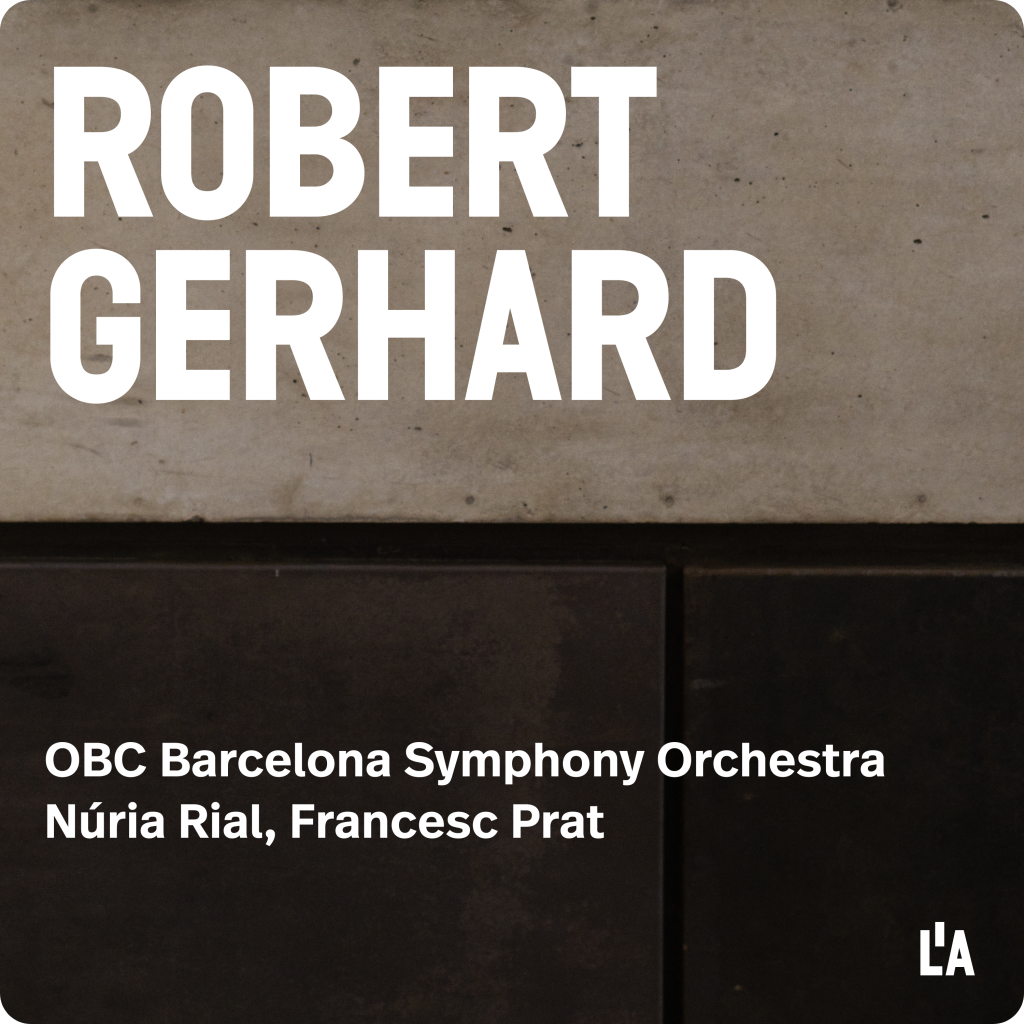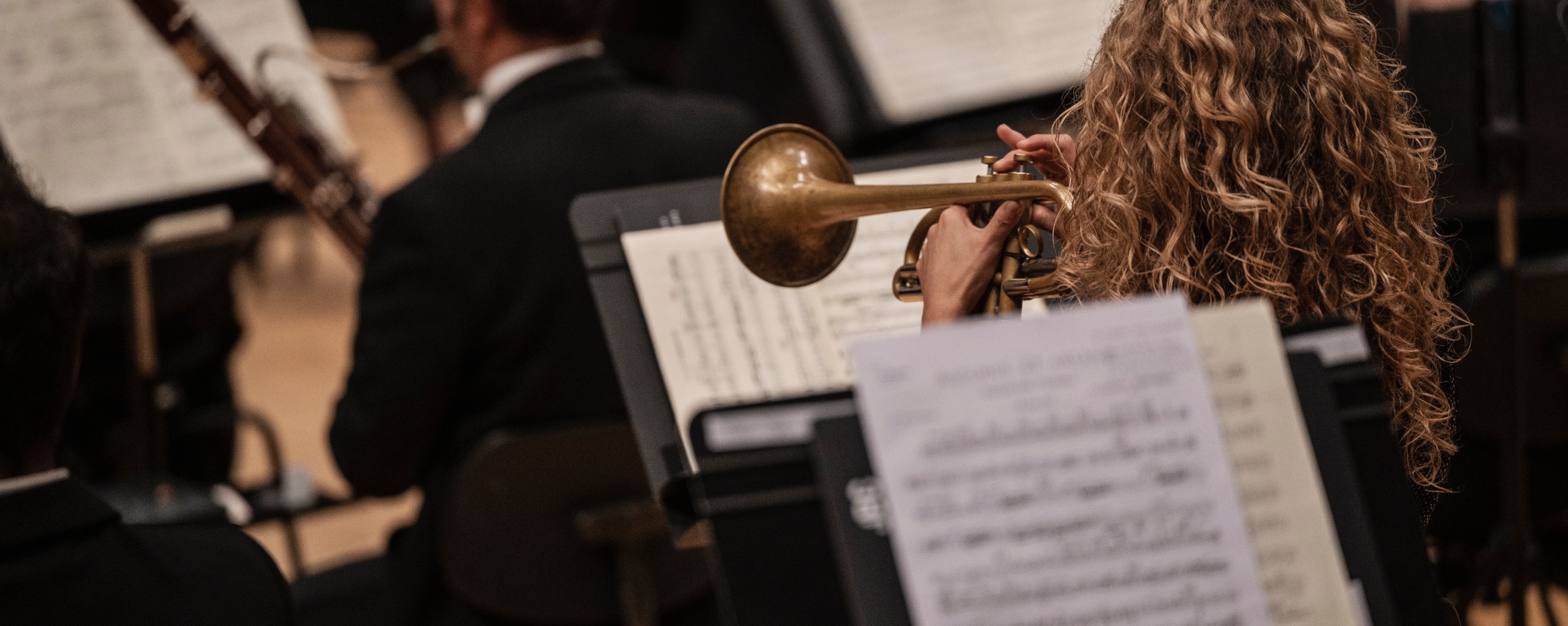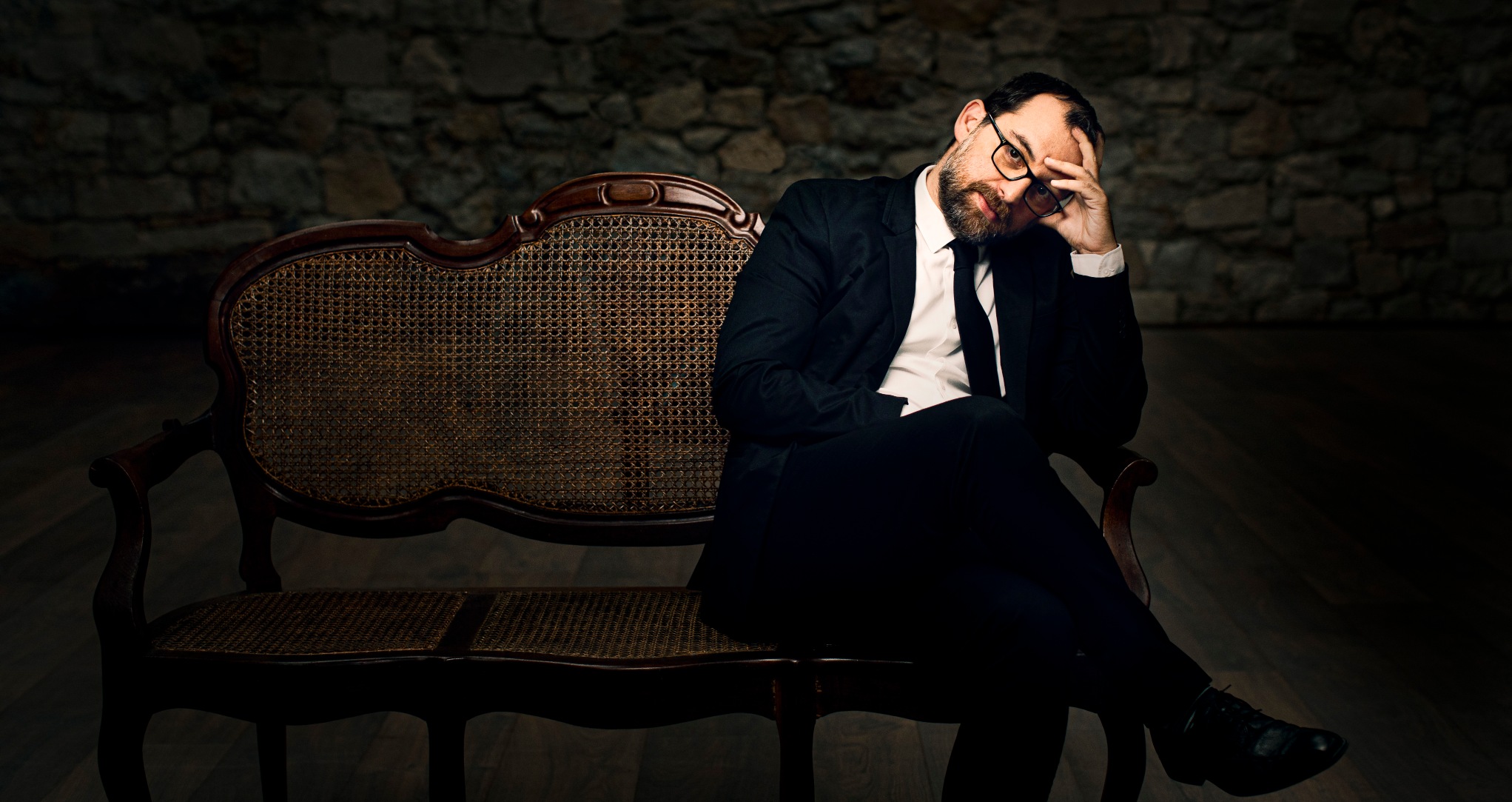
ORCHESTRAL FOLKSONGS
Liner notes by Julian White.
Whilst not an ethnic Catalan – Gerhard’s father was Swiss German, his mother French – Gerhard identified himself as ´one hundred percent Catalan in the sentimental and spiritual domains´ and this love for Catalonia, its cultural traditions, and its folk music, fertilised his creativity through much of his artistic life. Nowhere was this more explicit than in his settings of 14 Cançons Populars Catalanes for soprano and piano. Eight of the songs were premiered by Gerhard’s close friend the soprano Conxita Badia d’Agusti and the pianist Alexandre Vilalta at an all-Gerhard concert at Barcelona’s Palau de La Música on 22 December 1929. A succés de scandale, the concert showcased Gerhard’s latest compositions following his return to Catalonia from studies with Schoenberg in Berlin. Along with the two highly inventive sardanas included in the programme, Gerhard’s neo-national folk song arrangements were a clear reaffirmation of his Catalan roots and an attempt to reach out to his Catalan audience with an ostensibly more accessible style than works such as the partially serial Wind Quintet. An orchestral version of six of the songs was premiered in Barcelona on 1 November 1931 by the Orquestra Pau Casals under the baton of the composer. But the key event occurred on 16 June 1932 when Webern conducted the six songs at the ISCM Festival in Vienna. The performance received great critical acclaim leading to promises of further performances, offers of publication by Universal Edition and a telegram from the President of the Generalitat, Francesc Macià, congratulating the composer for putting Catalan folksong on the international musical map. As Gerhard proudly reported to Pau Casals, Conxita Badia was ‘truly the sensation of the festival’.
LA-OBC-001 | RELEASE DATE: 27 JANUARY 2023

CANCIONERO DE PEDRELL
1941
Gerhard’s teacher Pedrell inculcated in his devoted student a deep love for the rich cultural diversity of Spanish folk music that would resonate throughout his work. To commemorate the 1941 centenary of Pedrell’s birth, whose achievements Gerhard felt had been cruelly neglected, Gerhard composed two of his most attractive works: Symphony ‘Homenaje a Pedrell’, based on themes from Pedrell’s unperformed opera La Celestina, and Cancionero de Pedrell, Gerhard’s ‘wildflower bouquet for the tomb of Pedrell’ as he described it. The latter sets eight folk songs included in Pedrell’s Cancionero Musical Popular Español (1921) which Gerhard had been instrumental in finding a publisher for. The premiere of the chamber orchestra version was given on BBC radio in 1942 by the Canadian soprano Sophie Wyss with an instrumental ensemble conducted by Leslie Bridgwater. If the Catalan folk song settings clearly asserted Gerhard’s strong Catalan identity, the Cancionero de Pedrell , like all the works composed during the first decade of the composer’s exile in 1940’s England, reveal a broader, Pan-Spanish nationalist identity reflected in the regional diversity of the songs selected: two each from Catalonia, Asturias and Galicia and single representatives from Majorca and Valencia. Most of the songs respectfully leave Pedrell’s harmonies intact whilst those that do depart from their source remain relatively conventional harmonically. In several of the songs (highlighted in this orchestral version) Gerhard imaginatively recreates the sound of traditional folk instruments.
Sa ximbomba (The Ximbomba) is a joyful Majorcan song, dating back to the fifteenth century, traditionally sung between the first days of Carnival and Ash Wednesday by groups of young men searching for the traditional bonfires lit by neighbours in front of the doorways of their houses. It is accompanied by the archaic sound of the ximbomba (an indigenous friction drum of Arab origin) whose distinctive sound is clearly evoked in the low-pitched drone introduced during the opening bars. Next come two Catalan songs with an equally antiquated lineage, both derived from traditional Romances. La Mal Maridada (The Unhappy Wife) – a dialogue between a nightingale and a shepherdess – is the familiar, resigned complaint of an unhappy young woman forced into an arranged marriage with an old man. In Laieta, a young man successfully woos his beloved and wins her father’s approval. The first of two Asturian songs, Soledad , whose title is a pun on a girl’s name and the literal meaning of the word, ‘solitude’, is the impassioned cris de coeur of a young man whose love for Soledad knows no bounds. In Muera yo(May I die), with its stylised guitar rasgueo (strumming), an equally devoted young suitor instructs the object of his affections not to mourn him if he is killed fighting the moors. Two Galician songs follow: Farruquiño, combining melodies and lyrics from three separate songs, in which a Galician girl teasingly informs her beloved that he can be her confessor once he is ordained as a priest, and Alalá, the most ancient and characteristic of songs in the whole repertoire of Galician traditional music. Alalás are important markers of Galician identity and this one is based on two examples of the genre contained in Pedrell’s collection. The cycle concludes with Corrandes from Valencia, a dawn song known as the albeas. Evoking the rustic tones of the “gaita” and “tabalet” (small flute and drum), Corrandes provides a joyful conclusion to this exquisitely crafted song cycle which has deservedly become one of the composer’s most popular works.

SIS CANÇONS POPULARS CATALANES
1928
Gerhard’s settings provide a compelling introduction to the diverse riches of Catalan folk song which he claimed, with an exaggerated Catalan pride, ‘are completely different from the folk music of Castile or Andalusia’. The intimate intervallic relationship between the folk song’s melodies and Gerhard’s occasionally complex and dissonant accompaniments surely reflects the composer’s great admiration for the music of Béla Bartók.
La calàndria (The Lark) is an early morning harvest song performed by the saffron gatherers of the Baixa Sagarra and the district of Igualada in which a dejected suitor recalls being discovered in the arms of his former lover by the girl’s mother. In La mort i la donzella(Death and the Maiden), a girl is awoken by a vision of the spectre of death, graphically illustrated by a series of dissonant chords no less chilling for their initial softness. Once the dreadful apparition has been repelled, the music returns to the opening’s unsettling tonal ambiguity. El petit vailet (The Ploughboy) is still sung today throughout Catalonia as part of a children’s circle dance. It originates in a sowing song traditionally performed by girls as they move around a young boy or “llauret” holding a bull-driven plough. Gerhard’s version takes the form of a more familiar Catalan circle dance, the “sardana”, complete with an introit-imitating bitonal prelude, a sung verse whose 2/4 melody and dactylic rhythmic ostinato recalls the “curts” (short steps), and “llargs” (long steps)-style postlude with the characteristic hemiola rhythms so typical of the dance. Gerhard shows off his impressive contrapuntal prowess in his beautiful setting ofEl Cotiló(Old Cotiló), the lament of an imprisoned Catalan bandit, which seemed to haunt the composer throughout his life as a symbol of alienation and exile, culminating in a final allusion towards the end of his Fourth Symphony of 1967. Enemic de les dones(The Women-Hater), with its a quick tempo, major key, and syllabic word setting, is a stylised corrandes (improvised songs). A misogynistic lad confesses to his mother that he will remain a bachelor because of the flaws of women. The melody’s halting rhythms, alternating between 2/8 and 3/8, and gently dissonant, ambiguous harmonic language perfectly mirrors the young man’s vacillating emotions. Els ballaires dins d’un sac (Dancing in a Sack) is an anti-establishment carnival song performed in the main square in the towns of the Conca de l’Anoia and Penèdes regions by public and dignitaries alike. Traditionally the participants dance in a sack tied at the neck which, at a given moment, is undone exposing them naked in the middle of the square. Gerhard’s setting alludes once more to sardana-style rhythms in this spirited finale.

ROBERT GERHARD
Robert Gerhard i Ottenwalder (Valls 1896 – Cambridge 1970) is considered the greatest exponent of twentieth-century Catalan music. The son of a Swiss father and an Alsatian mother based in Valls, getting closer to his figure means doing so in a multifaceted and rich personality that covers the facets of pianist, composer, pedagogue, promoter, musicologist and intellectual. Initiated, stylistically, in “musical nationalism”, having been the last disciple of the Tortosa composer Felip Pedrell (1841-1922), and culminated in the one defined by Anton Webern as “New Music”, thanks to his studies with Arnold Schönberg (1874-1951) in the cities of Berlin and Vienna, make Gerhard this great personality.
Formed with Enric Granados and Frank Marshall (piano), between 1916 and 1921 he was a disciple of Felip Pedrell in the disciplines of musicology and composition. He collaborated with the Archive of Ethnography and Folklore of Catalonia collecting oral songs. In 1923 he moved to Vienna to study with Arnold Schönberg, with whom he worked until 1928. In 1931, with the arrival of the Republic, he was part of the Council of Culture of the Generalitat de Catalunya and was appointed professor of music. of the Normal School. He was part of the renovating group Compositors Independents de Catalunya and promoted the Festival of the International Society for Contemporary Music in Barcelona in 1936. In 1939 he went into exile and settled at King’s College, Cambridge, where he remained for the rest. of his life.
With the adoption of British citizenship in 1960, Gerhard began a stage where the internationalization of his music became more evident. His talent was recognized by directors such as Leonard Bernstein who commissioned the Symphony no. 4 «New York» on the occasion of the 125th anniversary of the New York Philharmonic Orchestra. One of the most important works of this last stage was The fish, composed from the work of the same name by Albert Camus, premiered in 1964 at the Royal Albert Hall with the orchestra and choir of the BBC under the direction of Antal Dorati. In 1968 he was appointed doctor honoris causa by the University of Cambridge. His extensive work was an avant-garde renewal ranging from neoclassical proposals to serialism, while reusing popular melodies.

OBC BARCELONA SYMPHONY ORCHESTRA
Núria Rial, Francesc Prat
FIRST VIOLINS: Raúl García, Maria José Aznar, Natalia Mediavilla, Katia Novell, Pilar Pérez, Anca Ratiu, Jordi Salicrú | SECOND VIOLINS: Alexandra Presaizen, Maria José Balaguer, Jana Brauninger, Claudia Farrés, Mireia Llorens, Antoni Peña | VIOLAS: Josephine Fitzpatrick, Franck Heudiard, Christine de Lacoste, Michel Millet, Miquel Serrahima | CELLOS: Olga Manescu, Lourdes Duñó, Vincent Ellegiers, Jean-Baptiste Texier | DOUBLE BASSES: Christoph Rahn, Albert Prat | FLUTES: Christian Farroni, Beatriz Cambrils, Oihana Giménez piccolo | OBOES: Dolors Chiralt, Jose Juan Pardo, Molly Judson English horn | CLARINETS: Josep Fuster, Alfons Reverté | BASSOONS: Silvia Coricelli, Noah Cantú | FRENCH HORNS: Juan Manuel Gómez, Joan Aragó, Juan Conrado García, David Bonet | TRUMPETS: Mireia Farrés, Adrián Moscardó | TROMBONES: Eusebio Sáez, Raúl García bass trombone | TUBA: Daniel Martínez | TIMPANI: Marc Pino | PERCUSSION: Juan Francisco Ruiz, Ignasi Vila, Guillem Ruiz | HARP: Magdalena Barrera | PIANO AND CELESTA: Dani Espasa
PLANNING DIRECTOR Joan Cortés | LIBRARIAN Begoña Pérez | PHOTOS May Zircus | GRAPHIC DESIGN Lorena Alonso Noblom | MUSIC PRODUCTION AND EDITORIAL DIRECTION Santi Barguñó
Album recorded in January 2021 in L’Auditori de Barcelona.
Amb el suport de

